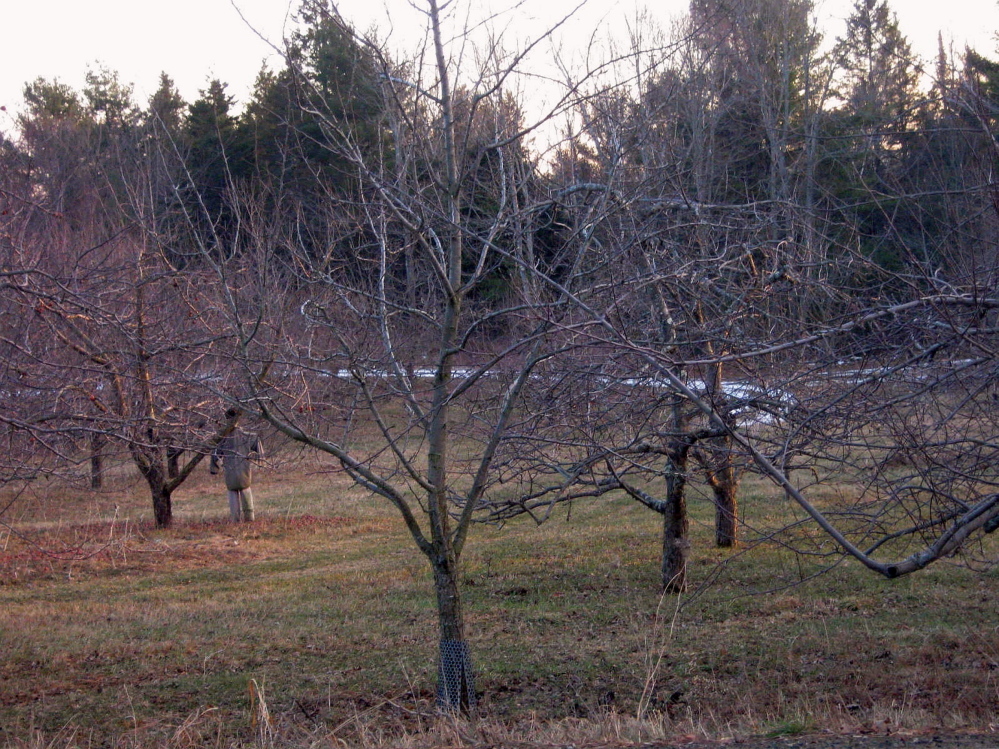Thank goodness it snowed.
In the week or so after New Year’s Day, it looked as though we might be in for a repeat of three years ago, when what little snow fell failed to cover the ground permanently, and by mid-January the woods and fields were as bare as November. Only worse. When this December’s snow disappeared again and the dead woods were exposed, the same shadow started to come over me.
In autumn, cornstalks and bare birches look like the fraying edge of summer. The last of that decaying brown lushness Keats called “mellow fruitfulness” and put side by side with gathering swallows, the dreamlike odor of poppies and the word “maturing.” All of which, if you understand fall in Maine, is superluminally parallel to geese in flight, milkweed silk and the rustle of leaves on the sidewalk. It has a fullness and dignity available only at that certain late moment. Then winter settles in, snow blanks everything and ice stills the rest.
But when the same cornfields and deciduous woods stay naked into January, the fullness is gone and the remains, at least to me, are creepy. Without obliterating snow, it’s all laid bare in a way that atheists try not to think about. It’s not winter. It’s the underside of death.
I can hardly stand to look at the trees. In October, late-afternoon sunlight practically sets the maturing vegetation on fire. But in January the sun sputters to a high point not even clearing the firs and sends shadows the length of evening across the road at 1 o’clock. By 2, lurid orange-purple light is seeping into chokecherry tangles. Shriveled cornstalks gleam dully in low-angling rags of pallid sun. Maple skeletons writhe on the roadside. Leaves are muckfrozen to the ground. Apple trees twist like forsaken spirits up out of the bog, with a few sickly, unfallen fruits dangling off their limbs like ghosts of Christmas ornaments. A birch this year inexplicably broke and crashed across the chain-link fence at the park. For a while, winter did not have the common decency to cover it up.
Mangled, leafless, lifeless, snowless January so completely lost to summer that there appears, from here, no exit.
I start thinking: Is this what we’ve had to look forward to all this time? In Stephen King’s recent story the main character discovers that, despite his lifelong denials, there is an afterlife after all, but on the other side are not flights of angels singing folks to their rest, but unspeakable sufferings toward which everything funnels with Bataan-like efficiency and no escape. Thank God I’m still alive for now, he thinks.
Or are the twisted apple trees and livid cornfields what climate-change suicide looks like, funneling us all down its drain with cosmic efficiency?
Whoa, wait a minute, this is really getting carried away by the perverseness of winter scenery that, thankfully, flickered only a moment this time. Relax. Even if a lack of January snow does have something to do with climate change, we’re still alive for now and didn’t have to shovel anything.
Back in 1972 or ’73, I remember, it got on toward the middle of December with hardly any snow yet. A friend and I drove out to the hinterlands of Buxton to see an old guy about a set of snowshoes, if I remember right, which maybe I don’t.
Might not be a white Christmas, we grumbled. People always worried about that, I remember. Until infallibly it snowed, even if it happened Dec. 24.
Surrounded by extended November, and snowshoes ready, my friend said to the old guy: “Maybe there won’t be any ground cover at all this year.”
The old guy scoffed and spit. “Don’t worry about that,” he said with unwavering faith in nature. “There’s always ground cover.”
Fast-forward a few decades, and it starts getting easy to be agnostic about the once and future weather. I could be snowbound in a nutshell and count myself the king of backwoods Troy, were it not that I have bad dreams.
Dana Wilde lives in Troy. His writings on Maine’s natural world are collected in “The Other End of the Driveway,” available from online booksellers or by contacting the author at daw20@uninets.net. Backyard Naturalist appears the second and fourth Thursdays each month.
Send questions/comments to the editors.




Comments are no longer available on this story